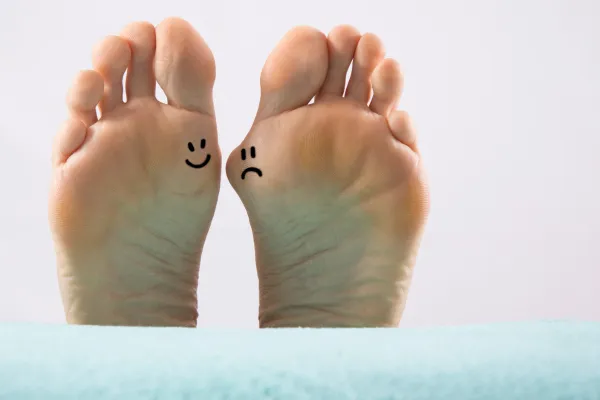
The Biomechanics of Bunions: How Foot Structure Contributes to Deformities
Bunions are one of the most common foot deformities, but have you ever wondered why they develop in the first place? While they might seem like just a cosmetic issue, bunions often have deeper biomechanical roots that contribute to their formation. Understanding how foot structure plays a role in bunion development is key to managing and even preventing them.
What Are Bunions?
A bunion is a bony bump that forms at the base of your big toe, where it connects to the foot. Over time, the big toe starts to drift inward toward the second toe, causing the joint to stick out. This misalignment leads to pain, swelling, and in some cases, difficulty walking.
While the outward appearance of a bunion may seem like a simple issue, it’s often the result of underlying structural problems in the foot that affect its alignment and function.
Foot Structure and Bunions: The Biomechanics Behind the Deformity
The development of bunions is typically linked to the way your foot is structured and how it functions. Here are a few key biomechanical factors that contribute to bunion formation:
1. Foot Type and Arches
Your foot type plays a significant role in how pressure is distributed across your feet while walking. People with flat feet or low arches often experience an excessive inward roll of the foot, known as overpronation. This misalignment causes uneven pressure on the big toe joint, leading to the development of bunions over time. High arches, on the other hand, may also cause abnormal pressure distribution, but in a different way. In both cases, the forces acting on the toes are unbalanced, increasing the likelihood of bunion formation.
2. Genetics: The Role of Inherited Foot Structure
Genetics plays a significant role in the development of bunions. If you have a family history of bunions, you may be more likely to develop them yourself. Inherited foot structures, such as a longer first toe or excessive flexibility in the joints, can increase the risk of bunion formation. These traits can cause the big toe to deviate inward, putting undue pressure on the joint.
3. Improper Footwear
Wearing shoes that are too tight, narrow, or high-heeled can exacerbate biomechanical imbalances and accelerate the development of bunions. Shoes that force the toes into a cramped space increase pressure on the big toe joint, causing it to shift out of alignment. Over time, this leads to the formation of a bunion.
4. Abnormal Gait and Walking Mechanics
How you walk (your gait) can also contribute to the development of bunions. If you have an abnormal gait, such as walking with an improper distribution of weight or with excessive pressure on the inside of the foot, it can increase the chances of developing bunions. This is why people with certain conditions, like arthritis or neuromuscular disorders, may be more prone to bunion formation.
How Can You Prevent Bunions?
While genetics and certain foot structures can’t always be changed, there are steps you can take to reduce your risk of developing bunions:
Wear Properly Fitted Shoes
Opt for shoes with a wide toe box and proper arch support. Avoid high heels and narrow shoes that force your toes into an unnatural position.Use Custom Orthotics
Custom orthotics can help correct misalignments in your foot mechanics, providing better support and alleviating pressure on the big toe joint.Foot Exercises
Stretching and strengthening the muscles in your feet can improve your foot mechanics and prevent bunion progression. Exercises like toe stretches and strengthening the arches can go a long way.Early Intervention
If you notice signs of a bunion developing, consult with a podiatrist as soon as possible. Early intervention can help manage pain and prevent further progression of the deformity.
Conclusion
Bunions are more than just a cosmetic concern—they’re a reflection of your foot structure and how it functions. Understanding the biomechanics behind bunion formation can help you make informed decisions about prevention and treatment. By addressing underlying foot issues early, you can prevent bunions from affecting your lifestyle and mobility.
At Prime Foot Clinic, we’re dedicated to helping you maintain healthy, pain-free feet. If you’re dealing with bunions or suspect you’re at risk, don’t wait. Reach out to us today for a comprehensive foot evaluation and personalized treatment plan.



